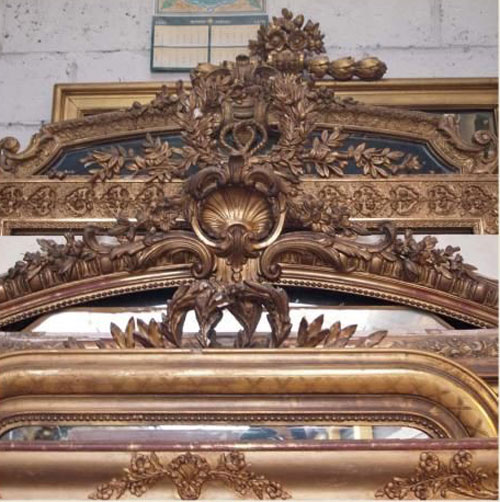
Mar 1, 2016
Have you Read Paris Flea Market Style? This book is eye candy for anyone who loves French style and found treasures.
“Paris is the place where shopping daydreams come true.” Specifically, the five special areas showed in Claudia Strasser’s lovely book Paris Flea Market Style.

Quoting the author, “The flea markets offer one of a kind insights into a lovely bygone era that valued beauty and worked to create it. The craft was as important as the product it produced and even the tools were something special.” Filled with both shopping and style tips Claudia is a globetrotting author and designer with a passion for Paris and the fleas.

It’s not hard to figure out that our favorite chapter is Architectural Elements and Hardware. Followed by Outdoors, Furniture, and Textiles. In truth we loved the whole book!
The mirrors above (on the back cover) often come from old grand apartments. This one grabs us at Efex, with the bows, swags, and drops. Might have to do another mirror and use this design!
The details on the Louis XV column with all its chippy goodness are heart stopping.

These pictures are a great example of how accurate and timeless the antique designs of our Efex are. B19 Swag 6, 7, and 8 as well as a similar T42 trim, are all parts of our catalog of unique bendable moldings.
However, to get a well styled French room you need a variety of texture and light. Enter two of our other passions, textiles and chandeliers, specifically the antique French kind.

Reading this book definitely started us dreaming of Paris and her fleas. It just might be time to plan another shopping trip, remember this is where we found M!
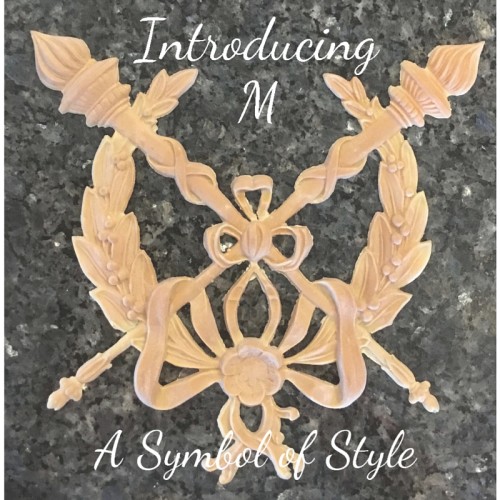
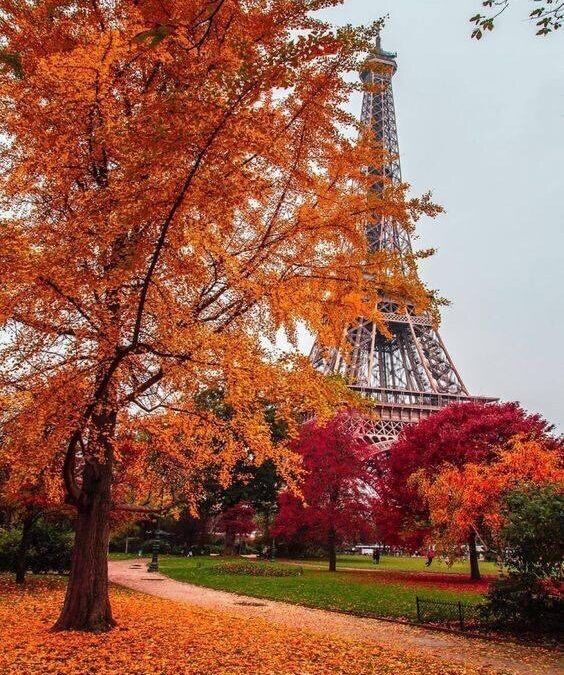
Oct 26, 2020
Paris in the Fall is always a good idea. to paraphrase Audry Hepburn.
2020 has been a bad year for travelers like myself. Now as Europe and England go into another lockdown and the rest of the Northern Hemisphere settles into our long winter’s nap I have become slightly obsessed with traveling. Or should I say the lack thereof?
I was reading the lockdown news along with worrying about who has more cases of the virus and the safety of our little pod and family here in New England when I came across this photo on Tumbler.
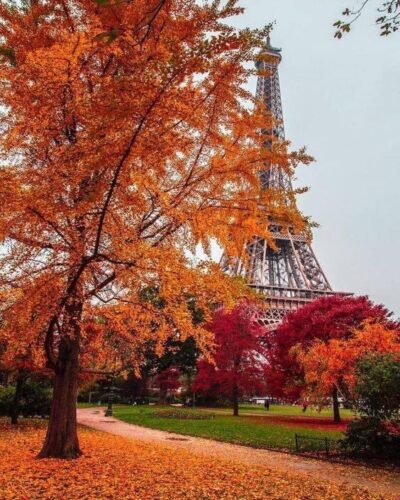
Crisp cool sunny days, crunchy golden leaves underfoot, steaming cups of hot chocolate, and the magnificent light. Facebook reminded me that In 2017 my husband and I took a fall trip to Normandy with a few days just wandering the City of Lights. It was only three years ago but seems like a lifetime. I
I was thinking about five of the great things we loved about that trip to Paris.
1 – The colors and the light. Ok, the light anywhere is great in the fall but Paris? Is just a little bit extra special. Even the Parisians think so as fall is the rentrée – the re-entry – is when Parisians come back to the city after summer at the coast. Businesses reopen and Parisians claim the city back from the tourists.
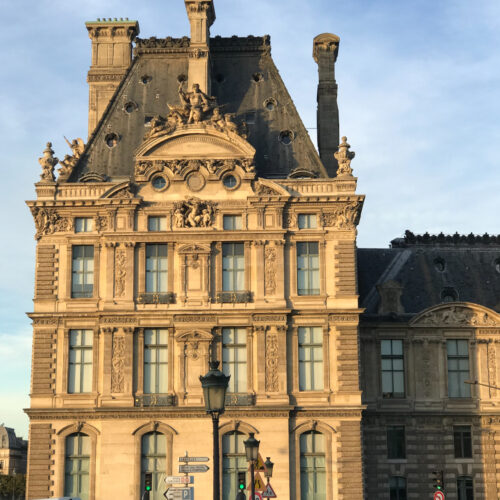
2 – Walking – the entire city is made for walking but the fall is cooler and fewer tourists, a brisk walk that turns into a ramble and lasts for hours. I highly recommend wandering the city on foot and exploring new neighborhoods. Pick a café for a glass of wine and people watch. You will never feel alone even sitting by yourself at a café. Be it chatting with the table next to you or reading a book all options are open in Paris.
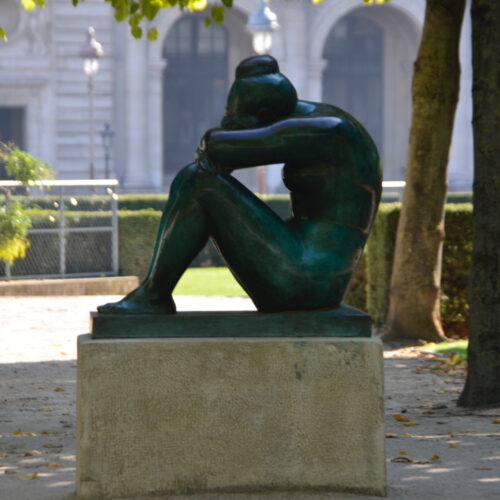
The Jardin Des Tuileries is your postcard-perfect Paris garden. Located between the Louvre art museum and Place de la Concorde here you can see glorious fall foliage in Paris backdropped by chic buildings, historic fountains, statues, and urns. The park is laid out in the formal French style with plenty of places to rest and savor the scenery. Or stop for a hot chocolate and Tarte Tatin at the Cafe des Marronniers.
Or as we did some time for a flower arranging class. Notice the rosette on the marble fireplace is very similar to our Rosette 114. 🙂
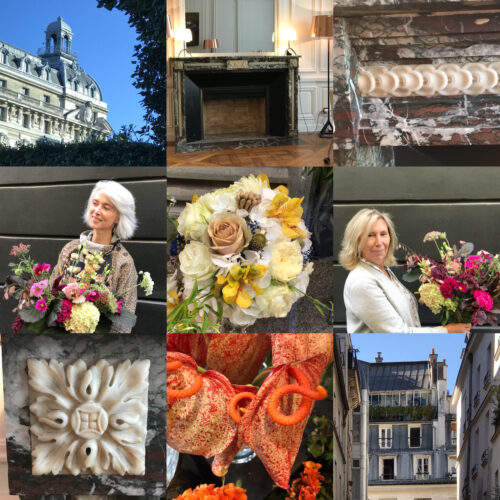
3 – Cruising down or up the Seine…The Seine is extra atmospheric at dawn or dusk on crisp, cool autumn days, when a fine mist hangs over the water. Along the riverbank, you’ll find street stalls with roasting chestnuts sitting next to the bouquiniste booksellers.
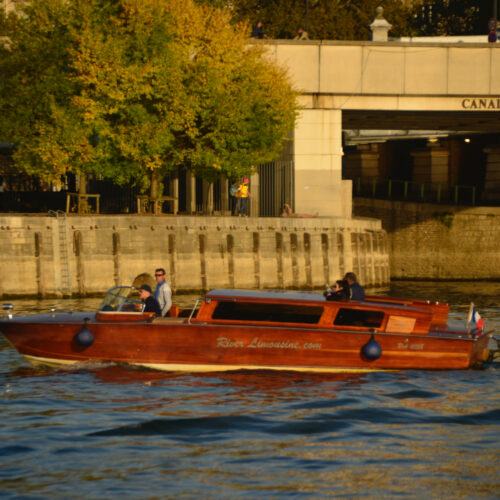
4 – Museums…Autumn is also a good time to check out The Louvre. While it is always busy fall is best. Even if you just wander around the exterior and the I.M.Pie pyramid. It never gets boring. While I love the structure, I do remember when it was first unveiled and everyone hated it. Not so much anymore it has become iconic all on its own. One wonderful walk we took started at the new Louis Vuitton Museum which also seems a little radical.
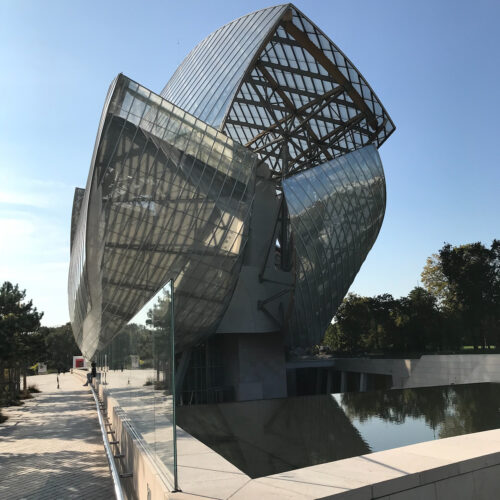
From here you can ramble through the Bois de Boulogne. French Royals once hunted in the forest, now these vast green lungs are the perfect destination for discovering a different Paris. Formally home to the Duke and Duchess of Windsor when in exile, a wander down the streets and across the park is a joy. The area is also home to a large national equestrian center.
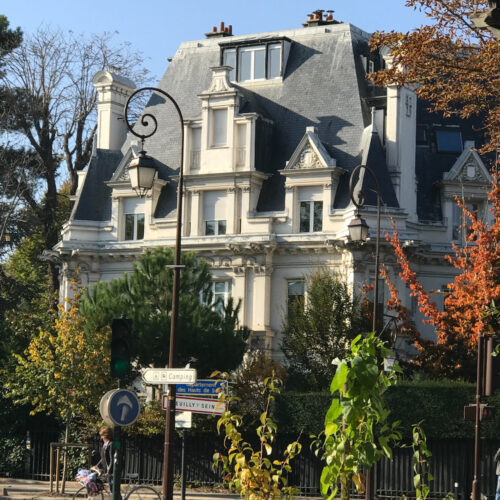
5 – Shopping… While the high-end stores are always full. Until the pandemic, there is a two-hour line at Louis Vuitton every morning… really! Shopping the side streets is far more interesting. Every little boutique has its own style and they come in all price ranges. Of course
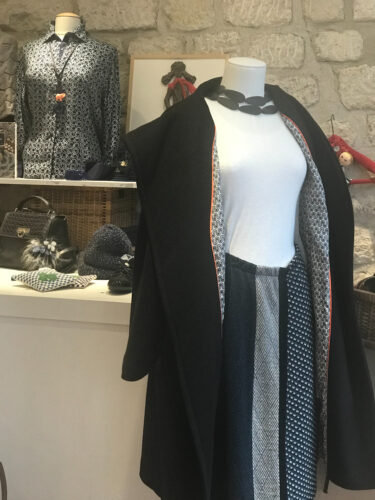
Of course, we couldn’t miss stopping at Laduree for a box of their famous macarons. Even if you don’t sample anything, it’s worth popping in just to see the charming interior! And look at these lovely packages with swags and bows.
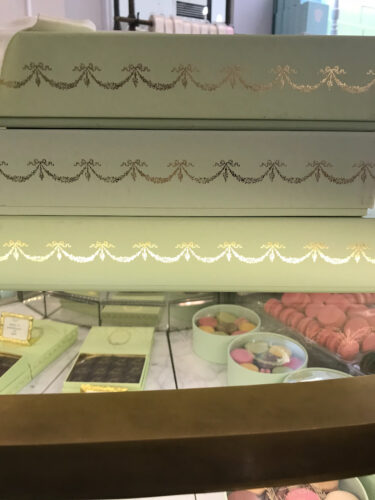
Until we can all travel again stay safe and healthy everyone.
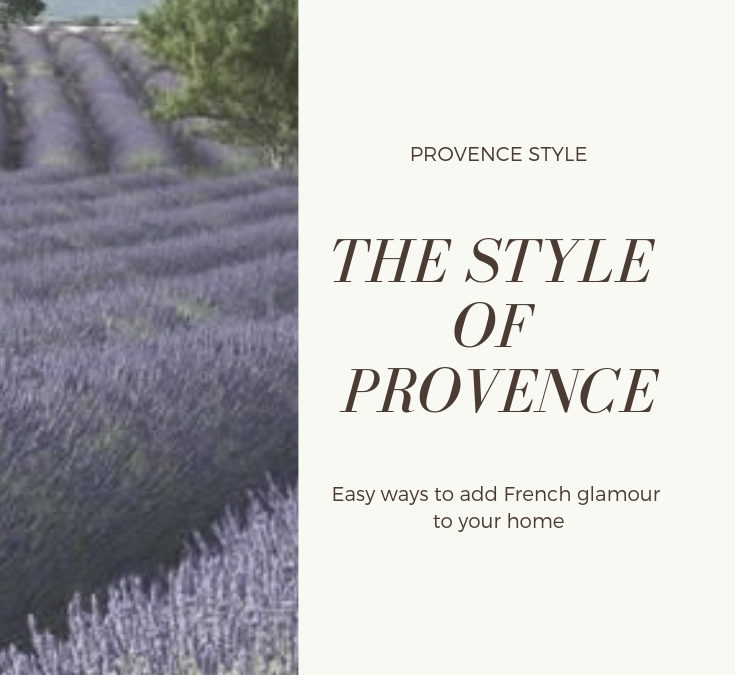
Feb 19, 2019
Provence Style is a design style that can “take you there” whenever you walk into a room. From the sun-drenched hills to the Cote d’Azure to the lavender fields, perfumes, or the heights of Mt. Ventoux the south of France is famous for its magnificent...
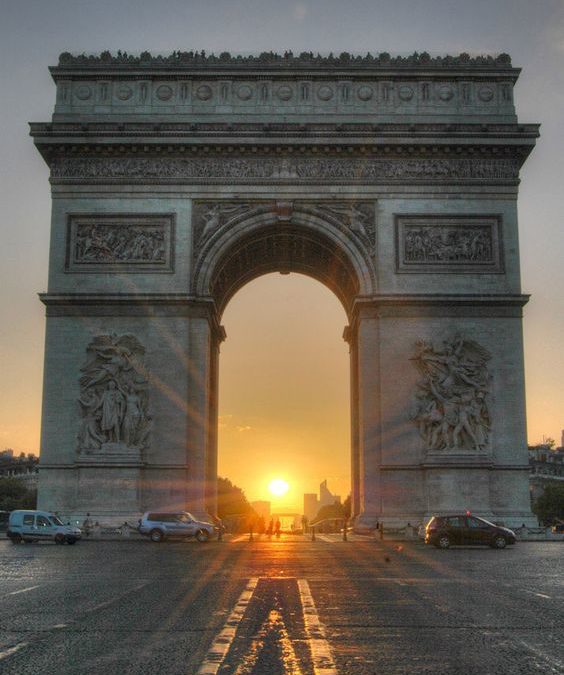
Oct 1, 2018
We will always have Paris
We are off. This travel adventure with Chris and Lydia is a little bit different than usual. First, it’s our 10th wedding anniversary, so it’s extra special, and as you may have guessed from the featured image and Facebook header image were going to Paris.
Before we go off brocante, food, and wine touring with Sharon Santoni of My French Country Home, we are spending the day at Versaille. Since we are both history buffs, it’s not just about the architecture or the embellishments. A couple of years ago I wrote about how this once humble french hunting lodge became the worldwide symbol even today for over the top indulgence.
Imagine the look on hubs face when I showed him the only room I could get near Versaille. The view of the palace is worth the trip, don’t you think?
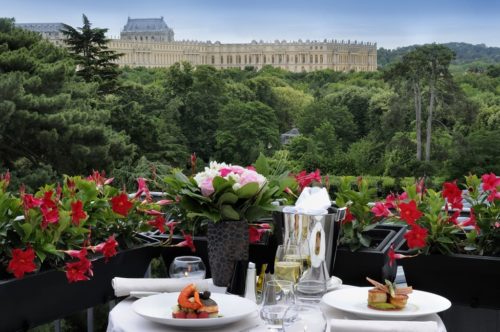
The anticipation of a healthy dose of all things French has been in the air at our home for weeks. The food, the wine, the style. While I have been to Paris many times before the anticipation before we leave is always palpable. It is a city that never looks the same while at the same time it never changes.
Yes given it is our anniversary Paris has always been considered the most romantic destination in the world. Or as Audrey Hepburn said in Sabrina, “Paris is always a good idea.”
As we get ready to leave, I always end up thinking and telling funny stories of previous trips to the city of lights. The last time I saw Paris I got lost, went to the flea markets, and found M and Madam X with my friend Stacey. You can read that story here.
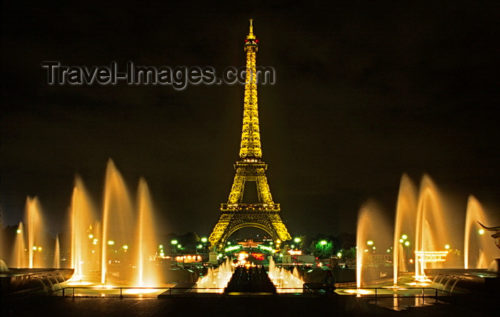
Paris, France: night shot of the Eiffel Tower and the fountains of the Palais de Chaillot and the Gardens of the Trocadéro – 7e and 16e arrondissements – photo by C.Lovell
As a young teenager, I went to Paris on a study trip, (studying drama) and ended up modestly skinny dipping in the Fountains at the Palis De Chioux. I say modestly because my underwear left more to the imagination than most bikinis do today!
So what adventures will w have this week? Stay tuned to our Instagram account to see the highlights of our travels.
xoxo Lydia

Jun 29, 2018
How to Create Industrial Effects with Paint and Efex
Waiting for paint and plaster to dry is a little bit like waiting for Gadot. You have plenty of time to dream up your next project.
It was in one of those waiting times that the idea for a series of “How to Create Industrial Effects with Efex and Paint” took hold. It is an effect we often strive for in our painting projects. Sadly if you’re like me, you usually revert to basic black as a synonym for industrial. But there really is so much more.
Many of our Efexs are a French Style but those of you who love French Designs know that Pris could be the home of Industrial Chic as well. With its preponderance of shades of grey and wrought iron ornamentation, it’s always the perfect place to start for inspiration. Did you know even the Eiffel Tower is made with a form of wrought iron!

Industrial Style is still very trendy, and there are many ways to achieve this look with paint. In this series, we have worked to make it affordable and accessible in both time and money. We have also avoided using pre-canned metal paints and chemical to achieve the look.
What we now think of as “Industrial Style” is rooted in the 1700’s and 1800’s all the way up until around 1920. The Industrial Revolution was in full swing, and it brought many new materials for everyday use. Cement, Wrought Iron, Steel, and Plaster of Paris to name a few.
This new material made gates and decorative embellishments for both homes and factories and began to set a unique style in architectural embellishments.
Our seven essentials of Industrial Style are:
1 – Wrought Iron
2 – Rust
3 – Concrete

4 – Tin
5 – Galvanized
6 – Zinc
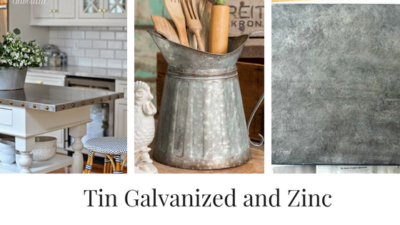
7 – Patina Green ( Photo by Tanya Farragoz)

Over the next few weeks, we will look at each of these finishes studying how they form and how you can get a stunning effect for less with paint and Efex.
Have a great weekend
xoxo Lydia
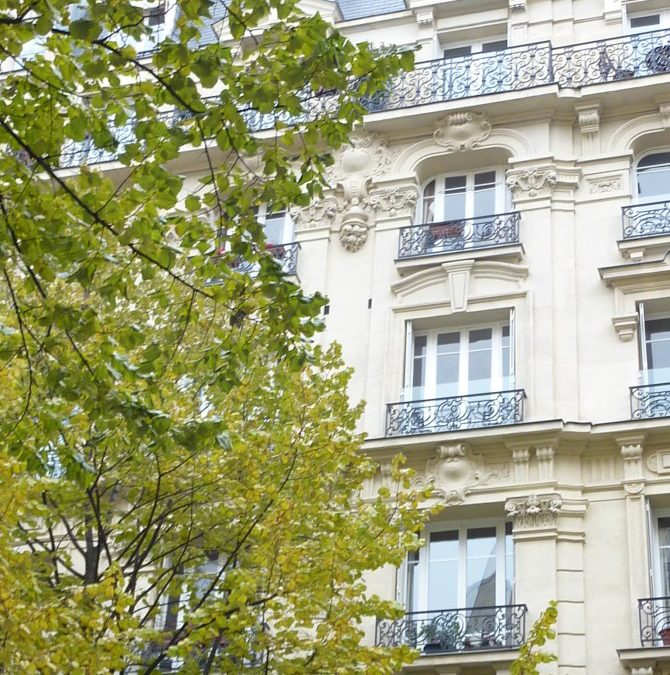
May 16, 2016
The Classic Paris Apartment
The elements of a classic Paris apartment have an interesting historic story. On today’s blog were doing something a little different. First we’re showing you what the seven style elements in the apartment are, and then telling you the story behind how they came to be lining the boulevards of Paris.
The 7 Elements of the Parisian Apartment
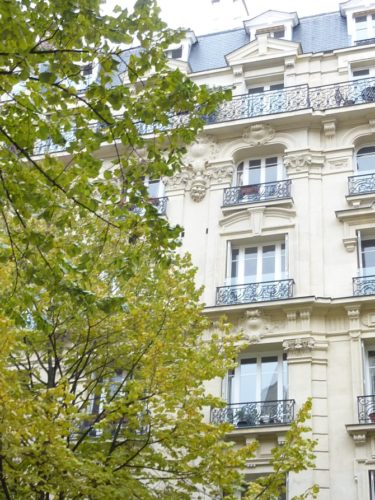
1 – High ceilings with floor length windows that run to the ceiling with draperies to the floor. They are always light and airy.

2 – Second floor wrought iron balcony with views to the boulevard.
3 – Open plan spaces with double doors leading into the public rooms such as the dining and living rooms.
4 – Ornate moldings.
5 – Chandeliers.
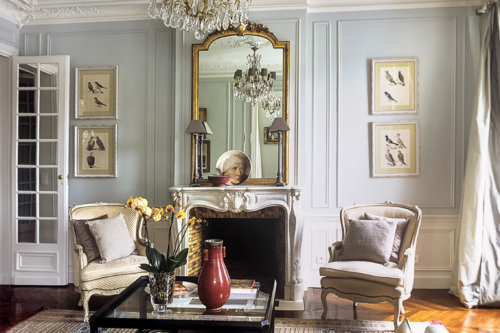
6 – Herringbone parquet floors.
7 – Marble fireplaces.
We found it very interesting to learn how the classic Paris Apartment was developed. The history of these magnificent apartments is in fact the history of Paris as the city we know today.
The Paris we see today was designed by Baron Georges-Eugène Haussmann. The long, straight and wide boulevards edged with trees and stone buildings were designed to visually connect the key points of the city. The magnificent open spaces and elegant façades that are everyone’s image of modern Paris only date from the 1800’s and arose from the ashes of overcrowded slums.
Emperor Napoleon III hired Haussmann in 1853 to reconstruct the city from the medieval alleyways into a modern capital. His goal was to improve public hygiene and wipe out epidemics by creating a clean water and sewage system and ease traffic congestion. It was the first attempt at planning a large city on a grand scale. In doing so he became very unpopular and was fired by Napoleon in 1870. The building continued on without Haussmann until 1927.
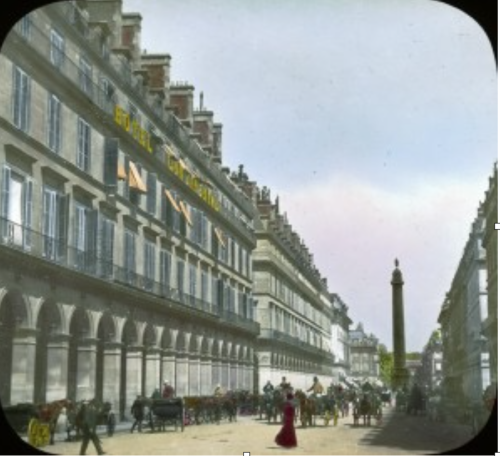
View looking at the Place Vendôme in Paris 1900 © Brooklyn Museum
The Haussmann Apartment
As part of Haussmann’s plan he not only built roads but also designed and had built many of the magnificent buildings lining the boulevards. Rather than design each building, Haussmann dictated that every structure had to conform to a strict plan. Even the monuments had to fit themselves into the uniform cityscape, as they were used to emphasize the most important points of the city. Architecture in that period was quite variable and styles were chosen to suit the function of each building. The civilian buildings were predominantly neoclassical.
For almost a century Paris building codes had strict rules about the height and the number of floors for buildings. They even specified the construction materials to be use depending upon social status and use. Apartments for workers were less ornate than the apartments for the upper class on the boulevards. His goal was to have a harmonious cityscape using certain basic elements with subtle changing details depending on the end use of the structure.
Through these regulations he defined a style for the bourgeois apartment buildings that lasted through the end of the nineteenth century.

Paris from Arch of Triumph 1915 © OSU Special Collections & Archives
Haussmann established a standard ratio between the height of the buildings and the width of the streets. He decreed that buildings should not be more than five stories high and roofs should have a 45-degree pitch to allow daylight to reach the sidewalks. This is the first major use of the Mansard roof.
His regulations also standardized how the façades should look. Haussmannian buildings are constructed of massive cut stone blocks and above a ground floor and basement. They all typically have:
▪ A first floor for shopkeepers and stores
▪ A second floor with a wrought iron balcony and elaborate cut stonework around the windows. This floor known as the étage noble (noble floor) and has the highest ceilings and most elegant rooms in the building.
▪ Third and fourth floors, with or without a balcony and possible less decorative stonework.
▪ A fifth floor with a single, plain balcony.
▪ A mansard roof with attic rooms lit by dormer windows for staff.

Each block had to form a unified whole and features such as balconies often continue in alignment the length of a block.
Of course it is from these rules that we get our five classic style elements of the Paris apartment. Going forward we will look at more of how these buildings and their apartments have developed and the style that carries on today has developed.

Apr 28, 2016
The book is an illuminating tour of French interiors and a how-to resource for attaining that Gallic flair.
This delightful book by Erin Swift can really help you get that special French flair no matter what your starting point is. Join us on a literary tour and take your rooms and furniture to French finishing school.
Broken into five perfect sections it’s not just a pretty picture book. Nor is it a historic tome. Rather it is a delightful style book. No surprise Ms. Swift is a stage set designer and stylist as well as a world class writer.

Her five main elements (chapters) say it all.
1 – Starting with Color – Both neutrals and deep and striking colors have a place in French flair. Similar to French fashion, the neutrals get accessories with pops of color, while the bold color statements are paired with neutrals and softened with antiques like this kitchen below.
2 – Art and Furniture – It’s not just about buying expensive art and antique furniture. Swift showcases two important points. Mixing modern with antiques is more than acceptable, it’s a necessity for this style.
Antiques are not just for living rooms, as highlighted by this lovely photo from the book of this amoire in a bath room.

3 – Objects and Accents – is not about your typical mass produced French accents. The idea behind this section is to take the normal and make it special. Objects can be frames or flowers or anthing you want.

She delves into the idea of layering and speaks to collecting, not objects that everyone has, but object that reflect your life.
4 – Structure – the heart of book and the highlight of structure is the molding. Of course we were smitten!

5 – Texture – the final chic dressing on a home, including textiles and floors and flooring. A great way to add interest if much of the room is plain or neutral.
Will you be rushing to the bookstore to grab this French style bible?

Jan 11, 2016
Empire Style Onlay/Applique
Empire Style Onlay/Applique – Many are reminiscent of the Neoclassical Era in design. Measure 9.0″ x 4.5″ R30 is perfect for furniture and doors.We have several rosettes and pediments that came from a special trip to The Paris Flea Markets and they are all French Empire Style Onlay/Applique’s
Efex easy apply furniture moldings are bendable moldings that mirror historic wood carvings. These modern reproductions have all the intricate detail of the original designs. You can add our moldings and appliques to furniture you are upcycling, or almost anywhere in your home.
Other moldings don’t bend, so they can only be applied to flat surfaces. Because Efex are flexible they can wrap around furniture. Simply glue your molding with contact cement. No nailing or clamping needed.
Efex can be applied to wood, plaster, metal, glass, and terra cotta. Use them on furniture, walls, doors, mirrors, or to create picture frames and boxes. They can be painted, stained, even gilded.
The molds for our Efex reproductions are hand carved with painstaking detail to bring life to striking details. Handmade in Maine for flawless quality, Efex are a symbol of style.






































